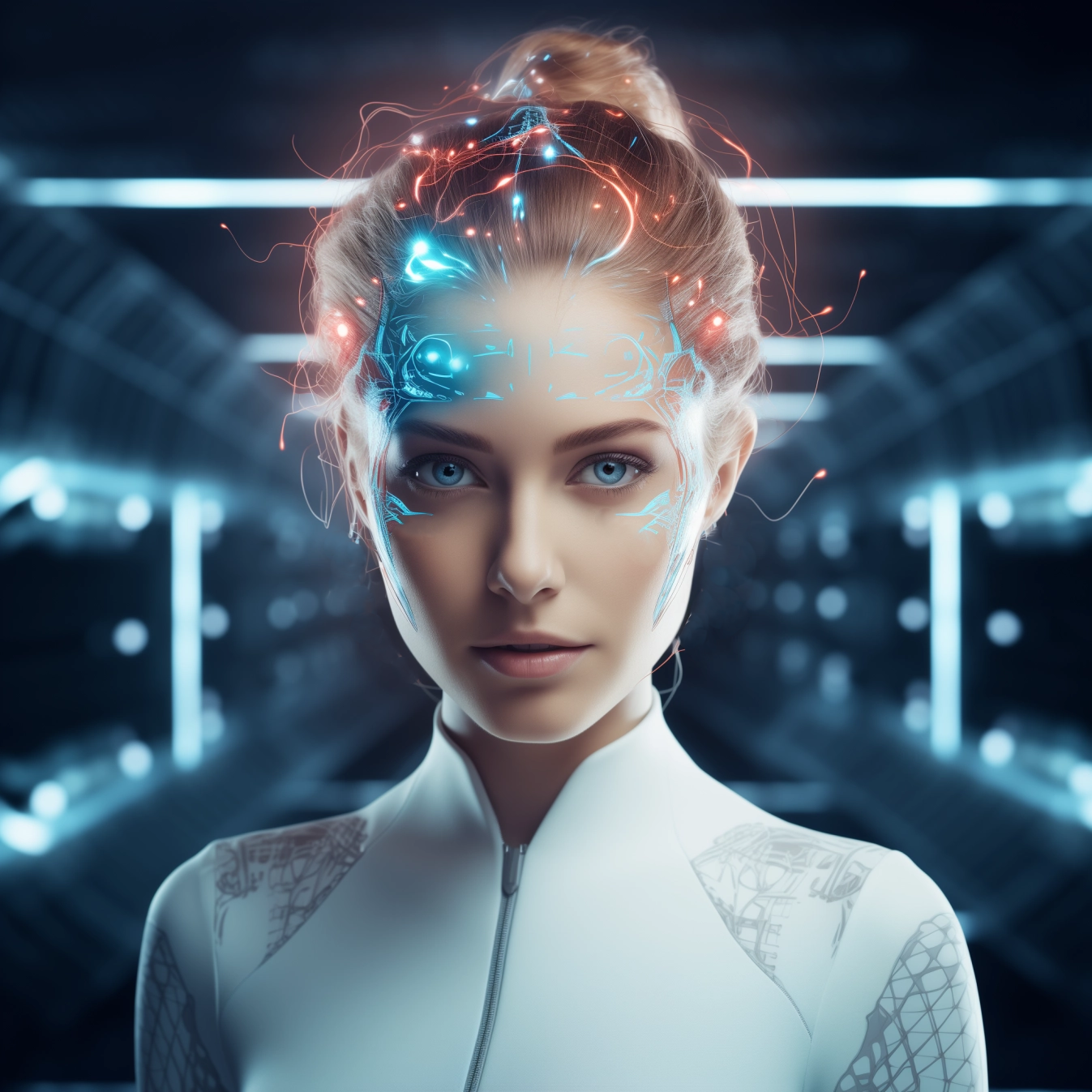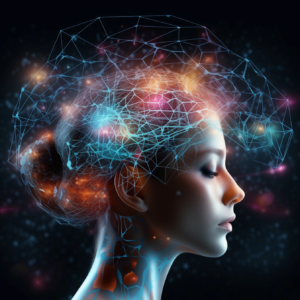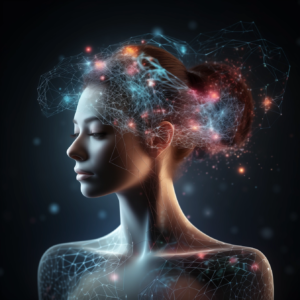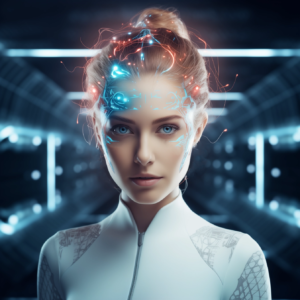Artificial Intelligence (AI) is a broad field that encompasses a range of technologies and techniques. There are several ways to classify the different types of AI, but one common classification system identifies the following main types. We will try to predict Human Biohacking and AI-Human merging intelligence capabilities levels on each AI type as well.
Artificial Narrow Intelligence (ANI)
Human Biohacking Intelligence Capability: Low
Human-AI Merging Intelligence Capability: Low
Also known as weak AI, ANI is the only type of AI that exists today. It is designed to perform a specific task or set of tasks, and it does not have the ability to learn or understand new concepts on its own. ANI is used in a wide variety of applications, including:
- Virtual assistants: Siri, Alexa, and Google Assistant are all examples of ANI virtual assistants. They can understand and respond to a wide range of voice commands, and they can be used to control smart home devices, set alarms, and get information.
- Self-driving cars: Self-driving cars use ANI to perceive their surroundings, make decisions, and take actions. They rely on a variety of sensors, including cameras, radar, and lidar, to build a model of the world around them.
- Medical diagnosis: ANI is used in medical diagnosis to analyze images and data to identify potential health problems. For example, ANI can be used to detect cancer cells in biopsy images or to identify signs of heart disease in electrocardiograms.
Artificial General Intelligence (AGI)
Human Biohacking Intelligence Capability: High
Human-AI Merging Intelligence Capability: Medium
Also known as strong AI, AGI is a hypothetical type of AI that would have the ability to understand and reason like a human. AGI does not yet exist, but it is the subject of much research. If AGI were to be developed, it would have the potential to revolutionize many aspects of our lives.
Predicting the arrival of Artificial General Intelligence (AGI) is a challenging task, as it involves forecasting technological advancements that are still in their early stages of development. However, various experts and researchers have offered their estimates on when AGI might be achieved.
Shane Legg, a research scientist at DeepMind, predicted in 2012 that there was a 50% chance of achieving AGI by 2028. In 2022, he reiterated his belief that AGI is within reach, stating that it could happen “within a decade.”
AI experts have expressed the belief that AGI is not far off. AGI could be achieved “in five years or less.”
It is important to note that these are just predictions, and there is no guarantee that AGI will be achieved by any of these dates. The development of AGI is a complex task that depends on many factors, including advances in artificial neural networks, machine learning, and other AI technologies.
Despite the uncertainty, there is a growing consensus among experts that AGI is achievable within the next few decades. If AGI is achieved, it will have a profound impact on society, potentially transforming everything from the way we work to the way we interact with each other.
Artificial Superintelligence (ASI)
Human Biohacking Intelligence Capability: Very High
Human-AI Merging Intelligence Capability: Vary High
ASI is a hypothetical type of AI that would be even more intelligent than humans. ASI does not yet exist, and it is not clear whether it is possible to create.
If ASI were to be developed, it could have the potential to pose a significant threat to humanity. However, human intelligence will not only develop exponentially but also intersect with AI in a way that enhances our capabilities. We will learn to harness the power of technology and use it to augment our own abilities, allowing us to reach new heights of cognitive function.
With the help of AI, we will gain unprecedented control over our mind, body, and environment. By leveraging advanced algorithms and data analysis tools, we will be able to optimize our mental and physical processes, leading to improved performance in various aspects of life. From enhancing cognitive function to enabling regenerative medicine, the possibilities are endless.
Furthermore, as AI becomes an integral part of our lives, we will begin to blur the lines between human and machine intelligence. By merging biological and digital systems, we will create a new generation of cyborgs capable of harnessing the full potential of both worlds. This new hybrid form of intelligence will allow us to explore new dimensions of thought and creativity, leading to unparalleled innovation and progress.
Ultimately, the intersection of AI and human intelligence will give rise to a future where we can achieve previously unimaginable feats. By combining our innate abilities with the power of technology, we will be able to create a world that is more efficient, more productive, and more in tune with our truest potential.
Further Research: Types of AI Based on Learning Methods
- Machine learning: Machine learning is a type of AI that allows computers to learn without being explicitly programmed. Machine learning algorithms are trained on large amounts of data, and they use this data to learn to make predictions or decisions.
- Deep learning: Deep learning is a type of machine learning that uses artificial neural networks to learn. Artificial neural networks are inspired by the human brain, and they are able to learn complex patterns in data.
- Reinforcement learning: Reinforcement learning is a type of machine learning that allows computers to learn by trial and error. In reinforcement learning, an agent is rewarded for taking actions that lead to a desired outcome, and it is punished for taking actions that lead to an undesired outcome.
- Rule-based systems: These systems use predefined rules to make decisions based on inputs. They are simple and easy to design, but may not be able to adapt to changing circumstances.
Machine learning systems: These systems learn from data without being explicitly programmed. They can improve their performance over time, but may require large amounts of data and computational resources to do so. - Natural language processing (NLP) systems: These systems can understand and generate human-like language, allowing for applications such as chatbots, voice assistants, and language translation.
Computer vision systems: These systems can interpret and analyze visual data from images and videos, enabling applications such as facial recognition, object detection, and autonomous driving. - Robotic systems: These systems use sensors and actuators to interact with the physical world, enabling applications such as robotic arms, drones, and self-driving cars.
Expert systems: These systems emulate the decision-making abilities of a human expert in a particular domain, making them useful for tasks such as medical diagnosis or financial planning. - Hybrid systems: These systems combine two or more different types of AI to achieve better performance and versatility. For example, a hybrid system might use both machine learning and rule-based reasoning to make decisions.
- Swarm intelligence systems: These systems use the collective behavior of multiple agents to solve complex problems, similar to the way that insects or birds work together to achieve a common goal.
- Evolutionary systems: These systems use techniques inspired by evolutionary biology to automatically generate and optimize AI models, allowing for more efficient and effective design processes.
Each type of AI systems mentioned before has its own strengths and weaknesses, and the best approach will depend on the specific application and problem being addressed.
These are just a few of the many different types of AI systems. As AI research continues to advance, we can expect to see even more creative and powerful AI systems developed in the years to come.




